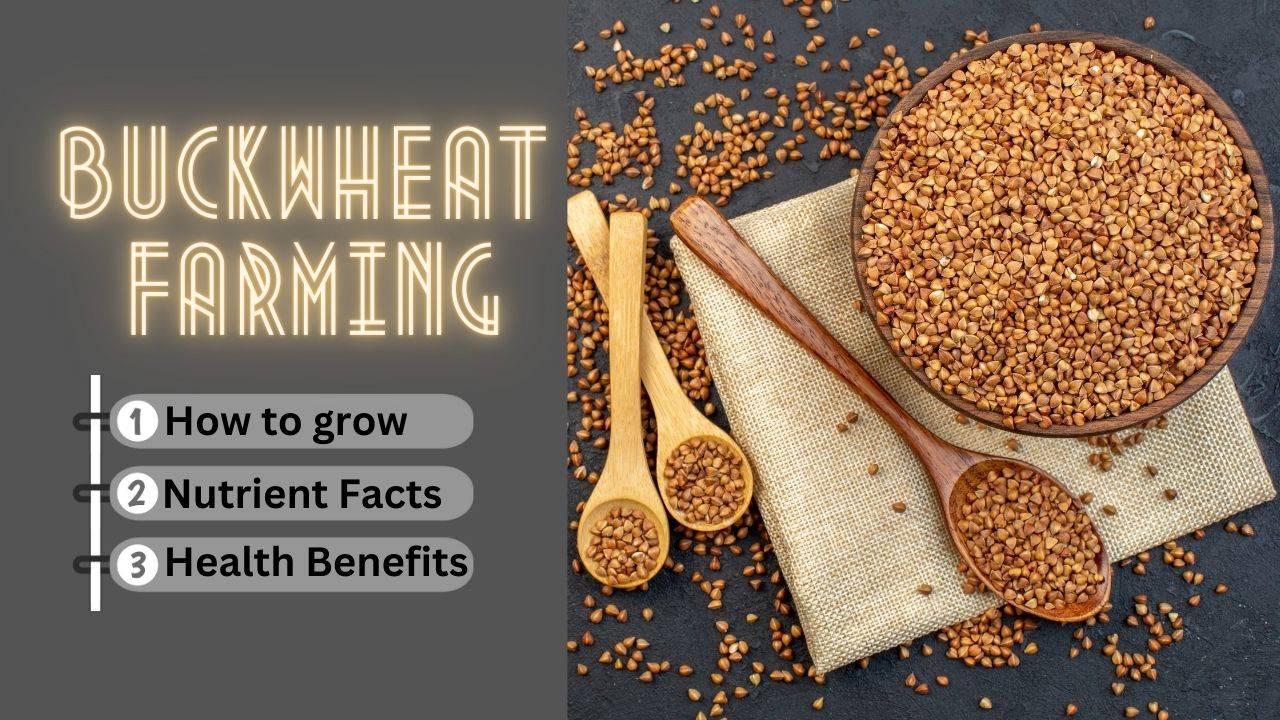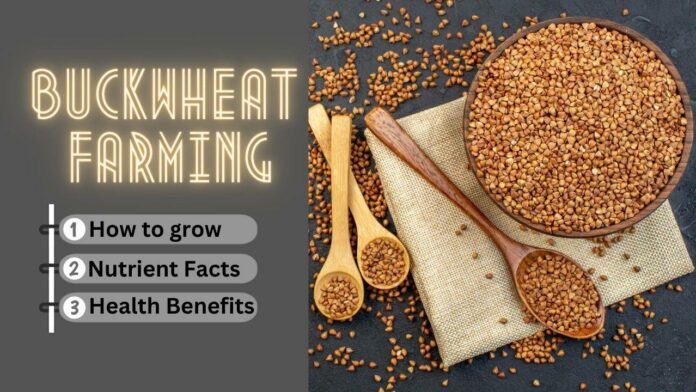
Buckwheat is known by different names in different languages: ‘katu’ in Hindi, ‘katu’ in Gujarati, and ‘paparai’ in Tamil. It is also called beech wheat in English. These buckwheat grains, which are triangular in shape and usually light brown-green in color, have had their outer husk removed. Buckwheat cultivation requires consideration of soil preparation, planting and ongoing maintenance. So, let’s explore the steps involved in deer farming.
How to grow buckwheat?
Those interested in breeding should follow the steps below:
-
Choose the correct location: Buckwheat thrives in well-drained soil with a slightly acidic to neutral pH. Choose a sunny spot for your buckwheat patch.
-
Soil preparation: Prepare the soil by removing weeds, rocks and debris. Buckwheat does not require very fertile soil, but it does benefit from loose soil with good organic matter. Adding compost or well-rotted manure can improve soil texture.
-
Planting: Buckwheat is usually grown from seed. You can broadcast the seeds or plant them in rows. Sow seeds about 1 inch deep and space them 2-4 inches apart. You can also use a seed drill for more spacing.
-
Watering: Keep the soil consistently moist but not waterlogged. Buckwheat is relatively drought tolerant once established.
-
Thinning: If you have planted too densely, thin the plants when they are a few inches tall to allow for proper spacing. Space plants 6-12 inches apart.
-
Weed Control: Buckwheat tends to eliminate weeds as it grows, but it is still important to keep the area relatively weed-free during the early stages.
-
Pruning: Buckwheat matures in about 10-12 weeks. You can tell it’s ready to harvest when the leaves turn brown and the seeds are hard and black. Cut the buckwheat stalks and let them dry for a few days. Next, thresh the seeds to separate them from the rest of the plant material.
Buckwheat Nutrition Facts
Buckwheat serves as a significant dietary source of carbohydrates, which is the main component of this grain. In addition to carbohydrates, it has a notable presence of protein, minerals, and antioxidants. Buckwheat nutrition is significantly superior to many other grains, with 343 calories, 13.3 grams of protein, 71.5 grams of carbohydrates, 10 grams of fiber and 3.4 grams of fat per 100 grams of raw buckwheat. The carbohydrate content in buckwheat is mainly in the form of starch, which is the main carbohydrate store in plants. It exhibits a low to medium glycemic index, indicating that it does not rapidly raise blood sugar levels.
Some of the soluble carbohydrates in buckwheat show the ability to moderate the rise in blood sugar after eating. Buckwheat is also a good source of dietary fiber, promotes colon health, and contains high-quality protein with essential amino acids. Despite the presence of antinutrients that affect protein digestion, buckwheat protein has shown several health benefits in animal studies, including lowering cholesterol and reducing the risk of colon cancer. In particular, buckwheat is gluten-free, making it suitable for people with gluten intolerance.
Health Benefits of Buckwheat
Just like other whole grain pseudocereals, buckwheat is also associated with many benefits. Here are a few:
Better blood sugar control
Over time, high blood sugar levels can contribute to the development of various chronic conditions, including type 2 diabetes. Therefore, managing postprandial blood sugar spikes is critical to maintaining good health. Buckwheat, known for its high fiber content and low to moderate glycemic index, is generally considered a safe dietary option for people with type 2 diabetes. Several studies have linked buckwheat consumption to lowering blood sugar levels in people with diabetes, with one notable study in diabetic mice showing that consumption of buckwheat concentrate reduced blood sugar levels. 12-19% has decreased.
This effect is attributed to the unique compound D-chiro-inositol, which increases insulin sensitivity in cells, facilitating the absorption of sugar from the blood. Additionally, certain components of buckwheat appear to slow down the digestion of table sugar. In summary, these attributes make buckwheat a healthful choice for people managing type 2 diabetes or aiming to improve their blood sugar control.
Heart health
Buckwheat offers potential benefits for heart health due to its rich composition of heart-healthy compounds, including rutin, magnesium, copper, fiber and specific proteins. Among the various grains and pseudograins, buckwheat stands out as the most abundant source of rutin, an antioxidant associated with several potential benefits. Rutin may reduce the risk of heart disease by preventing blood clot formation, reducing inflammation, and lowering blood pressure. Additionally, research shows that buckwheat can raise your blood lipid profile, which is an important risk factor for heart disease.
A study involving 850 Chinese adults demonstrated that buckwheat consumption was associated with a reduction in blood pressure and improvement in blood lipid profiles, characterized by lower levels of LDL (bad) cholesterol and HDL (good) cholesterol. Have high cholesterol levels. This beneficial effect is believed to be attributed to a specific protein in buckwheat that binds to cholesterol in the digestive system, preventing absorption into the bloodstream.
Buckwheat is a pseudocereal, meaning it is not a traditional grain that grows on grass but is still used like other grains. It’s gluten-free, full of fiber, and contains valuable minerals and plant compounds, especially rutin. Eating buckwheat is associated with health benefits such as better blood sugar management and improved heart health.
First Published: 02 Oct 2023, 16:36 IST
